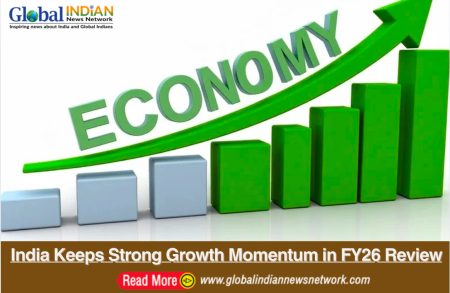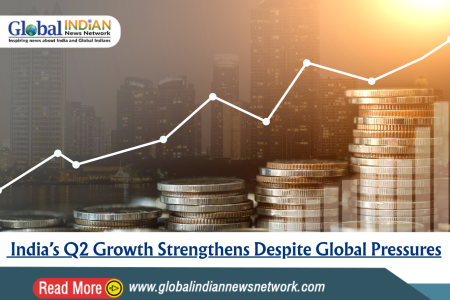
RBI Deputy Governor Michael Debabrata Patra envisions India becoming the world’s second-largest economy by 2031 and the largest by 2060, leveraging its inherent strengths.
Speaking at the Lal Bahadur Shastri National Academy of Administration in Mussoorie, Patra emphasized that India’s growth prospects are bolstered by its traditional advantages. He highlighted that India’s development has been primarily driven by capital accumulation, with investment stabilizing at 31.2 percent during 2021-23 and showing signs of acceleration.
Patra noted that India’s investment has historically been financed by domestic savings, with households as the main providers. From 2021 to 2023, the gross domestic saving rate averaged 30.7 percent of gross national disposable income. This reduces India’s reliance on foreign resources, which play a minor role in the growth process. The current account deficit in the balance of payments has remained modest at around 1 percent of GDP in 2023-24, insulating the Indian economy from external shocks. India’s gross external debt is less than 20 percent of GDP and is almost entirely covered by foreign exchange reserves.
He also highlighted that India’s rising growth trajectory is supported by macroeconomic and financial stability. Inflation has fallen back within the target tolerance band of 4 percent due to consistent monetary policy actions and supply management. Core inflation, excluding food and fuel, has reached its lowest level ever.
Financial stability is reinforced by prudent financial policies and active supervision, combining on-site inspections with off-site surveillance using SupTech, big data analytics, and cybersecurity measures. India’s banking sector has seen a significant reduction in gross non-performing assets, which fell from their peak in March 2018 to 2.8 percent of total assets by March 2024.
Patra also discussed ongoing fiscal consolidation efforts. The general government debt, estimated at 81.6 percent of GDP at the end of March 2024, is expected to decline to 78.2 percent by the end of the decade, according to the IMF. Patra projects that with increased expenditures on reskilling/upskilling the labor force, investing in digitalization, and promoting energy efficiency, the debt could fall further to 73.4 percent of GDP by 2030-31. This is notable in light of IMF projections showing a rise in debt ratios to 116.3 percent for advanced economies and 78.1 percent for emerging and middle-income countries by 2028.
He highlighted India’s favorable demographic dynamics as a potent growth accelerator. With a significant working-age population, India’s demographic dividend is expected to last for more than three decades. Patra emphasized the importance of making efforts to capitalize on this opportunity.
Patra also pointed to India’s digital revolution as a significant growth multiplier. He noted that India is emerging as a global leader in leveraging digital technologies for transformative change. The JAM trinity (Jan Dhan accounts, Aadhaar, and mobile connections) is expanding formal finance, boosting tech start-ups, and enabling targeted direct benefit transfers. India’s Unified Payment Interface (UPI) system facilitates seamless inter-bank and person-to-merchant transactions, operating 24/7/365. The internationalization of UPI is progressing rapidly, Patra added.












